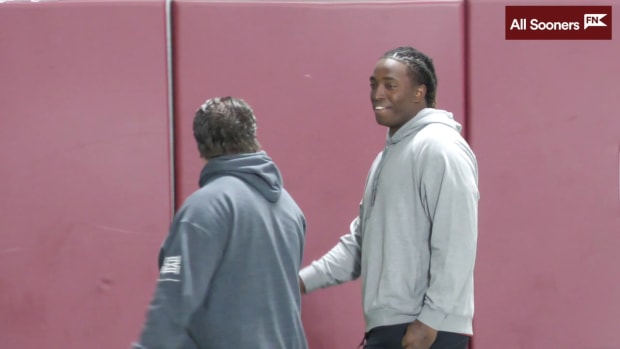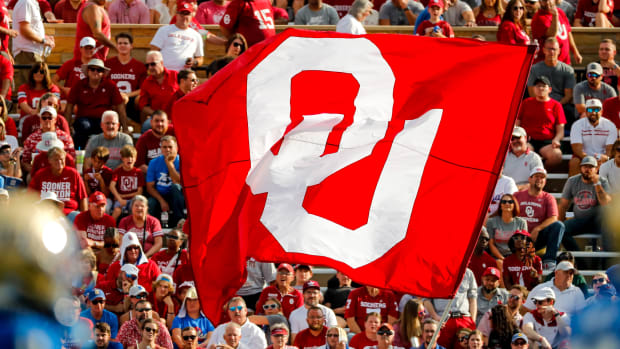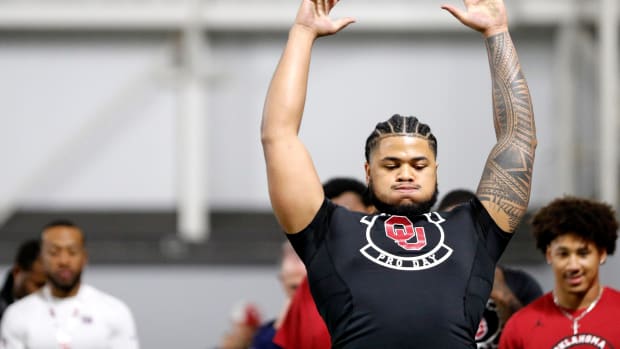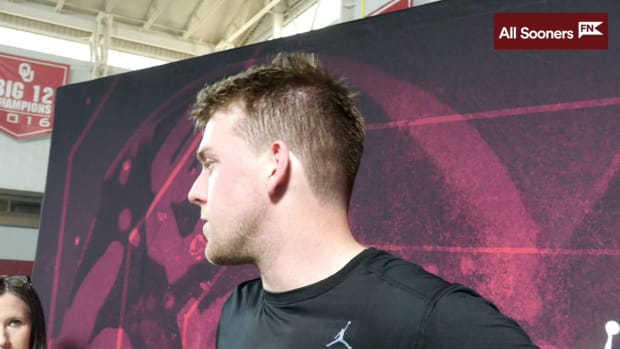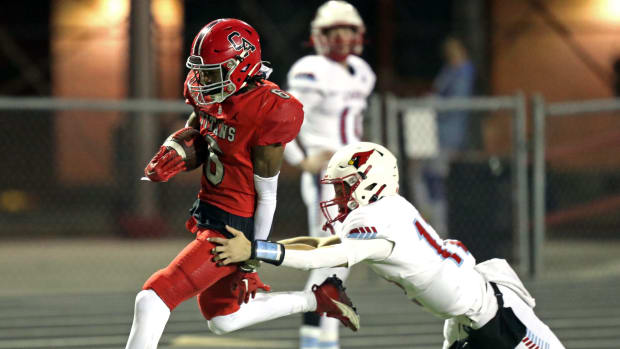Projecting Oklahoma's 2021 NFL Draft Prospects
Oklahoma had another good NFL Draft.
And the sun came up in the east.
Like clockwork, like an annual rite of spring, the Sooners sent four players into the NFL via the league’s annual draft. This year’s group — CeeDee Lamb, Kenneth Murray, Jalen Hurts and Neville Gallimore — marked the 13th consecutive year that OU has placed at least four entry level job-seekers into the nation’s top professional football venture.
No school in the country has a longer streak going than Oklahoma’s.
But now that the 2020 NFL Draft is in the rear view mirror, it’s time to look ahead and, frankly, time to ask: does that streak continue in 2021?
“I mean, I think we got a lot of guys that absolutely have the potential,” coach Lincoln Riley said this week. “And I feel like each year, with the way we’re recruiting, that pool gets a little bit deeper.”
Riley rightly declined to offer up any future Sooner draft candidates. That’s just placing undue pressure on young players, of course, and it’s not fair.
As the same time, it’s not like any of these guys think they don’t have a future NFL.
The reality may be this: OU’s streak of sending at least four players into the draft might very well end next year. Simply put, most of the Sooners’ best players — or the most promising players for a professional career, anyway — are young.
The best candidates for 2021:
- Center Creed Humphrey, a fourth-year junior, is a lock to be drafted — probably first or second round — but the rest of the offensive line is hardly a sure thing. Guard Tyrese Robinson has the size and the savagery, but his game is still coming along. Guard Marquis Hayes also has a shot with another season of improvement.
- Cornerback Tre Brown will get a look because of his explosiveness and supernatural closing speed, but he acknowledged last season his all-around game has a long way to go.
- Wideout Charleston Rambo will be eligible for next year’s draft and certainly has the speed to make an impact at the next level, but unlike OU receivers over the last five years — Dede Westbrook, Sterling Shepard, Marquise Brown, CeeDee Lamb — Rambo doesn’t have a big body of work so far and needs a lot more polish before he leaves.
- Defensive end/tackle LaRon Stokes has an NFL frame and made plenty of plays in 2019. He seems like a good candidate to be drafted next year if he has a productive senior season.
- If linebacker Caleb Kelly can stay healthy, continue to come back from his ACL injury and eventually regain the form that made him a 5-star recruit, then NFL scouts will love his athletic ability and his intelligence.
- Linebacker DaShaun White would have to have the kind of unexpected breakout junior season that Curtis Lofton had in 2007 to catch the NFL’s eye next year, but he might have that kind of potential.
- Running back Kennedy Brooks has had a very productive career so far but might not test all that well at the combine or pro day.
- Running back Rhamondre Stevenson and defensive end Ronnie Perkins will offer strong pre-draft evaluations, but both also have raised red flags. They’re both going to miss almost half the upcoming season from a drug-test suspension.
That’s certainly more than four. In name only, it would seem as many as 10 Sooners could hear their names called next year. But things happen, and 12 months of speculation means almost nothing on an NFL calendar. Just look at the case of OU cornerback Parnell Motley, who showed growth and maturity and played like a beast last year — and still somehow went undrafted this year.
“I think there will be a lot of current players that have their names called in the future,” Riley said, “but don’t know that I want to single anybody out.”
It’s possible that last year’s total draft haul of eight players (among the first 211 picks, or in the first six rounds) could be the standard around Norman for a while.
In 2005, OU had 10 players drafted (among the first 177 picks, or in the first six rounds), and in 1988, a record 13 Sooners were drafted (among the first 200 picks, or in the first eight rounds).
For Riley to send eight players to the league — Kyler Murray, Marquise Brown, Cody Ford, Bobby Evans, Dru Samia, Ben Powers, Austin Seibert and Rodney Anderson — after just his second season is quite an accomplishment.
It’s probably no coincidence that every one of those eight was an offensive player.
“I think some of that, it’s just a pure numbers standpoint,” Riley said. “We lost a lot of players from that team. We had a really, really special class of players. Any time you have that many guys getting their name called, that’s a pretty good deal.
“We’ve got smaller classes coming up the next couple of years, and that’s just kinda the ebbs and flows of it. But I honestly believe that we’re going to have several years like that, and I think we’ll have several years where it’s very balanced out between the number of offensive and defensive players that are drafted here in the near future.”
Riley said highly-touted offensive prospects started noticing the Sooners late in the 2015 season, his first as offensive coordinator. He said the same thing started happening for defensive recruiters midway through Alex Grinch’s first season as defensive coordinator.
Having linebacker Kenneth Murray picked by the Chargers in the first round — OU’s first defensive first-rounder since 2010 — and noseguard Neville Gallimore go to the Cowboys in Round 3 was significant for future defensive recruiting.
But keeping a big presence in the draft every year is just a huge thing for the program overall.
“Yeah, it’s important to us,” Riley said. “There’s always been such a tremendous history of OU players and getting drafted high, and I think more than that, it’s just not only guys that have been drafted, but just how many of our guys seem to go and have success and be prepared and ready to make the most of those opportunities.
“It’s important historically, and obviously, when you get back-to-back No. 1 overall picks, kinda launches you into an even different stratosphere. So it is, it’s important, I mean, kids want to win championships, but also, each of these kids has individual dreams and goals. And if you hear your name called, no matter if you’re the first pick or the last one, it means a lot of things went well.
“Because every player that puts on a college football jersey has a dream of that. And it just doesn’t happen for everyone. So it’s important for us. It’s kinda half celebration and half time to continue to build your program and your brand and show people that what you’re doing is working.”
To get the latest OU posts as they happen, join the SI Sooners Community by clicking “Follow” at the top right corner of the page (mobile users can click the notifications bell icon), and follow SI Sooners on Twitter @All_Sooners.
